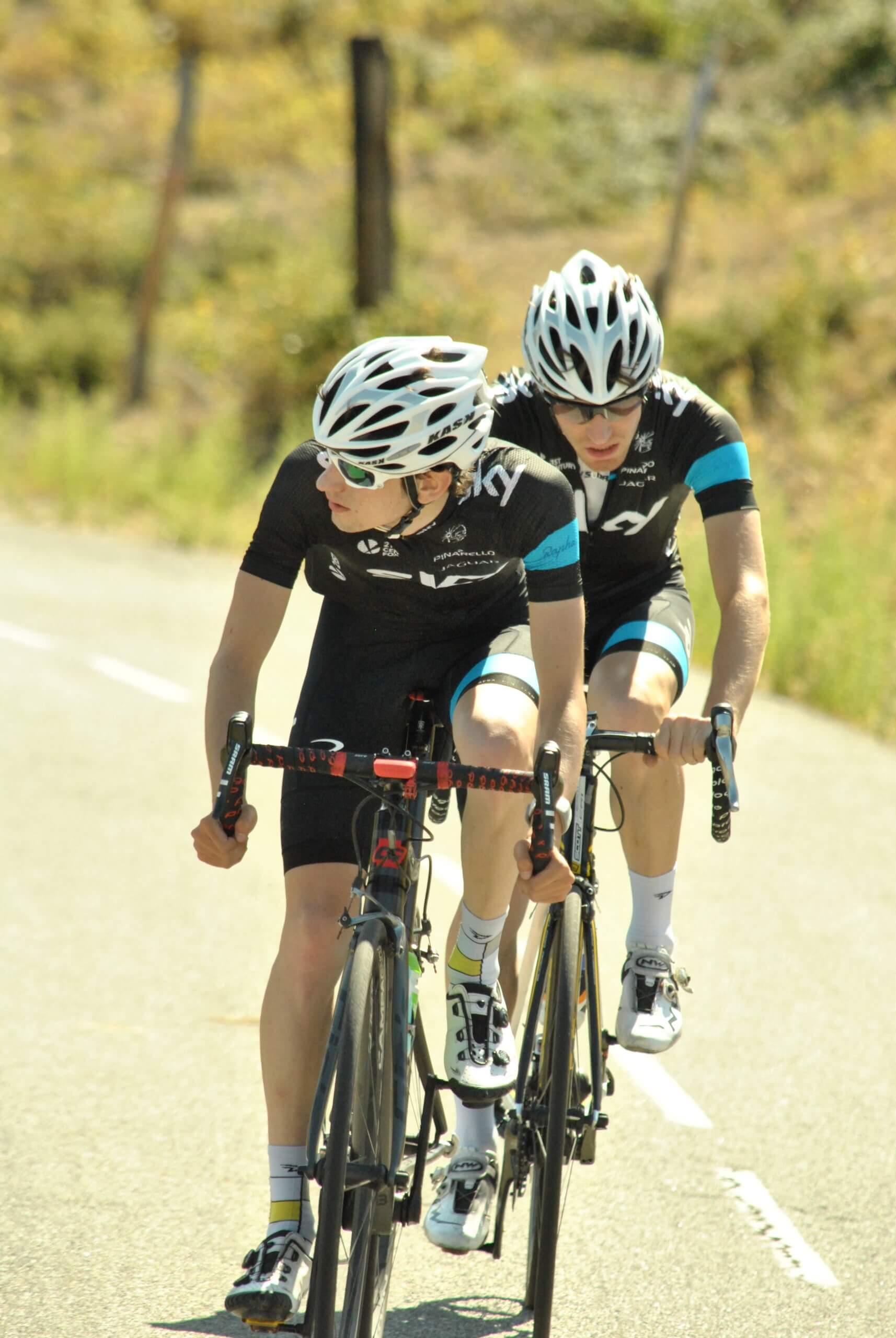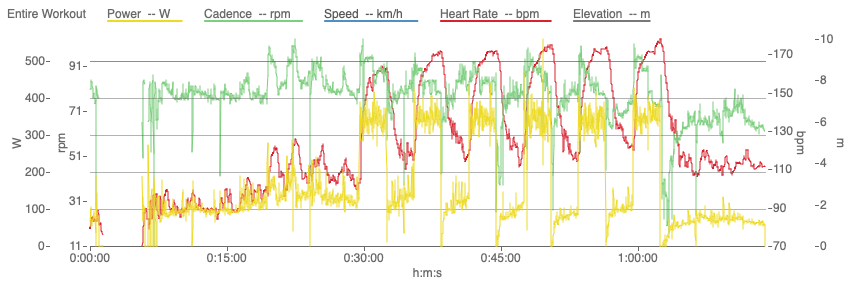One of the many reasons to train with a power meter has to do with determining optimal training load. Should I ride two hours today or four hours? Should I do intervals or just ride easy? Are ten hill repeats enough or would fifteen make me even stronger? How many hours or miles should I ride this week? Does more always equal better?
These questions are asked daily by cyclists all over the world and all of them are legitimate and valid questions to ask each month, week and day, or even after every hill repeat. There are elaborate schemes on how to periodize your training based on miles, hours, racing category, age and even your geographical location. Some are based on heart rate, some are based on mileage, and even others are based on goals and available hours to train. All are designed to answer the same question: How much is enough?
The least amount of the most specific
I think Joe Friel said it best in “The Cyclist’s Training Bible”, when he wrote, “An athlete should do the least amount of the most specific training that brings continual improvement.” If you can win the race with ten Vo2 max intervals then why do twelve or fifteen? I remember reading this when his first edition came out and thinking it was flawed in the fact that I didn’t have a way to really know how much was enough? I mean, I love riding my bike just like the next guy, and I will ride extra miles just because it’s fun, not because it’s ‘just enough’ to give me the win on Sunday. At the same time, I agree that riding ‘just enough’ is the right way to think about training for success, but in my mind it was only a guess as to how much training stress you needed in order to give you the fitness needed to win. Since this was just a guess, and being the ever ‘over-achiever’, if I think ten Vo2Max intervals are what I need, then I am going to do twelve or fifteen just to be sure.
Enter the dawn of the bicycle data acquisition device- the power meter.
With a power meter, you can record every effort, every ride, every race, quantify your exact training load or ‘dose’, and then you can watch your progress to learn your training ‘response’. The ability to understand how you respond to training stimulus is paramount to answering the question: How much is enough? If you do ten Vo2 max intervals two times a week for a total of eight weeks before your key event, and then see that your Vo2 max power has increased by 30%, you’ll know that the training worked. Conversely, maybe you only do those intervals one time a week and in eight weeks see no difference in your Vo2max power, or maybe you do them for ten weeks and your Vo2 max power didn’t increase significantly after week eight.
In April 2008 Road issue, I wrote a little about this subject from the season perspective and how much training each of us should do from an idea of Chronic (last six weeks of training) and Acute (last seven days of training) training load. This month, I want to address the same question, but from the perspective of the workout itself.
Training stimulus
In order to do this we need to understand the relationship between intensity, time and the energy system we are trying to improve. For our first example, let’s say that Joe Athlete wants to work on his Vo2 max power. From the good Doctor Coggan’s training zones, we know that Vo2Max is stressed when you are between 106 and 120% of your functional threshold power or FTP. So, the intensity must be in the correct training range in order to cause enough stress on that energy system, in this case the Vo2 Max, for it to stimulate improvement. At the same time, the duration of that effort must be long enough to stress that energy system. If you rode at 120% of FTP for only thirty seconds, then that would not be long enough to actually cause it to adapt. For the Vo2 Max system to adapt to training stimulus, a minimal effort for 3 minutes is necessary with a max time length of about 8 minutes. After 8 minutes, it’s very hard to maintain if not impossible for most people at 106-120% of FTP.
How many intervals is enough ?
So, once you understand the relationship between time and intensity, it allows you to set some guidelines about how many intervals are optimal to do on a workout basis. For instance, since you are trying to improve your Vo2 Max system and you want to prepare for an upcoming race that has (8) five minute climbs in it, then you are going to do (8) x 5 minute intervals between 106-120% of FTP(let’s use 300 watts in this example). The first interval you do, you crack out 360 watts, the second is 350, and the third is 340.
Repeatable efforts & when to stop
This third interval is what I call the ‘repeatable’ interval. The watts that you do in that interval are the watts that you can ‘repeat’ over and over for multiple repeats. The first two efforts are always the ‘fresh’ efforts in which you have plenty of glycogen in your muscles and you also have a lot of anaerobic work capacity available to crack out the big watts. However, once that anaerobic work capacity is used up, then you are left with just the right amount of energy to repeat more efforts.
The reason this is so important is that we are going to take the watts in the third effort and subtract 5% from it (in this case 340 x .05=17 and 340-17= 323 watts), and when you can’t average at least this many watts (323) for your interval, you are going to stop as now you are not training intensely enough in order to elicit a great enough stress to cause a training improvement or adaptation. Maybe the sixth interval is 320 watts and because you are an ‘overachiever’ (aren’t we all!?) and you want to make absolutely certain that you are cooked, you do one more interval but by minute two, you see that you can’t even maintain 310 watts much less over 320. This immediately lets you know that you are now below the intensity needed to stimulate the Vo2 max system and you can’t maintain the time needed to create enough stimulus for improvement.
In reviewing Hunter’s interval guidelines above, they can help you to understand exactly when to stop doing interval repeats based on that ‘ever telling’ third effort. Of course, this requires a bit of mental math out on the training ride, but as long as you know the percentage drop-off to look for in each time period, then you should be able to quickly and easily figure out how many intervals are optimal for each workout.
Repeatable efforts & when to do more
In the example below of an athlete’s Vo2 Max workout, we see the other side of the coin and in this case, the athlete could have done more intervals to gain even more training adaptation. This is a perfect example of using these interval guidelines to ensure optimal training. This athlete’s watts didn’t drop at all from third interval to the first one, they actually went up! Unfortunately, he stopped after the fifth interval, when he could have easily done another, if not two or more.

Optimum number of training intervals
Since we are all limited by the time we have to train and we want train most efficiently, it makes sense to use your powermeter to figure out your optimal number of training intervals for each workout. Not only does it make sense, but it now allows you to take advantage of using Joe Friel’s Maxim, “Train just enough for success”. With a powermeter, we have now been able to quantify the optimal training load in the grand scheme, and also using some simple guidelines, you can truly optimize your training each day. We are all limited by our ability to recover and our abilities to adapt to training stress, so that will always be a limiter in our fitness improvement. However, wouldn’t it be nice to improve at the highest rate that you can? Of course it would and now using my interval guidelines to help you, you can be assured that you are training optimally. As a coach of all kinds of cyclists, from Pro Tour riders to recreational, I use the powermeter to its fullest to make sure my athletes train optimally. This is the key for each and every athlete, train to your optimal level and you’ll be assured of success.
This article is part of a series of articles initially written and published by Hunter Allen on Peaks Coaching Group , which we share here thanks to our partnership. Hunter Allen conducts monthly power training webinars. They are a great and economical way to continue learning about training and using a power meter.Previous webinars are for sale “On Demand” as well. Check out webinars and his coaching site at www.PeaksCoachingGroup.com Hunter also has online training programs available at www.TrainingPeaks.com/hunter and follow his twitter @hunterpeaks







